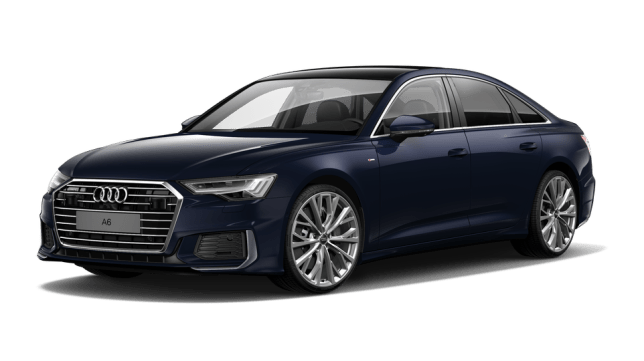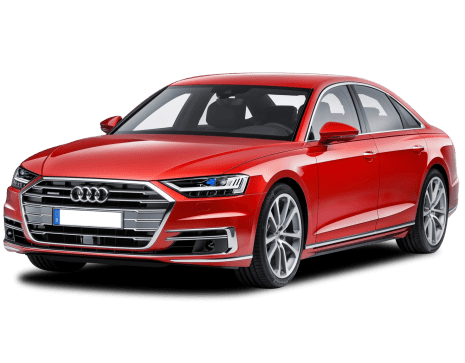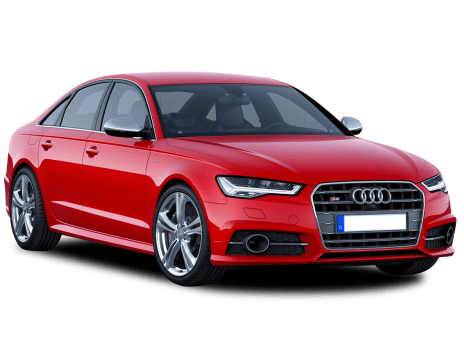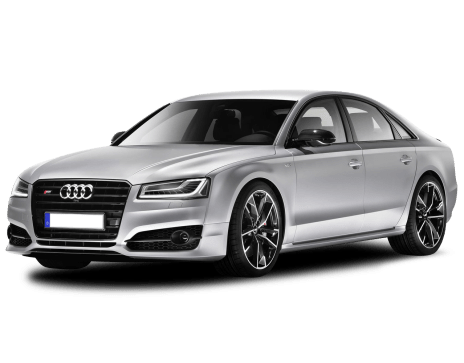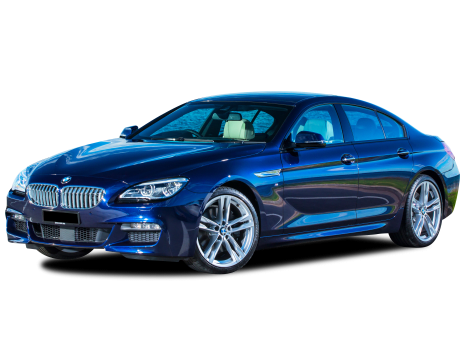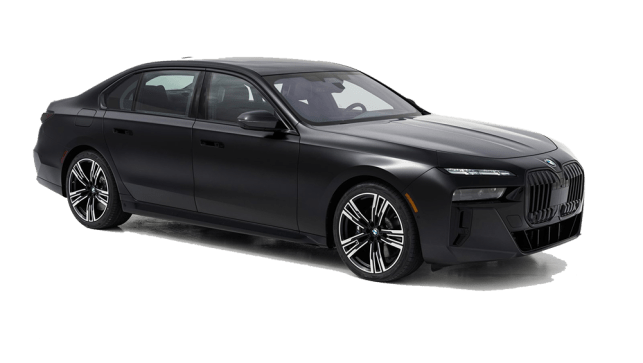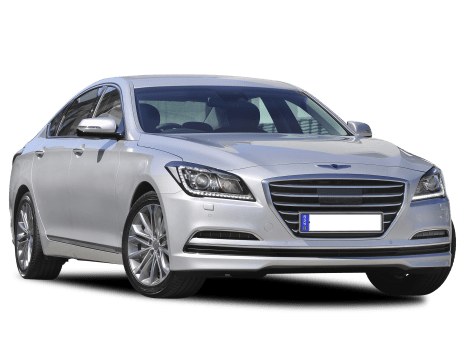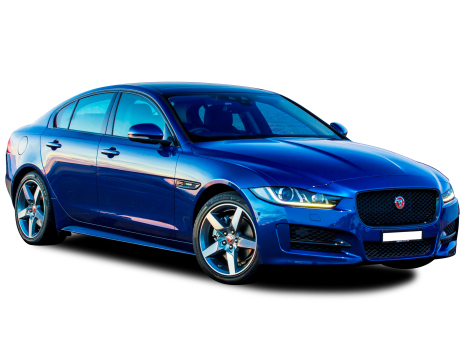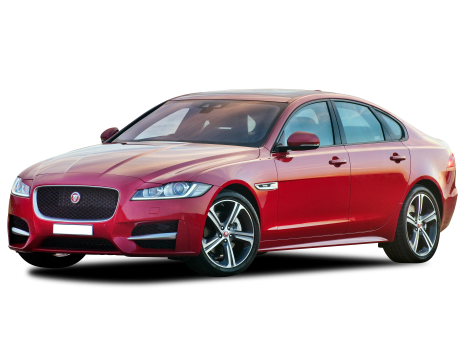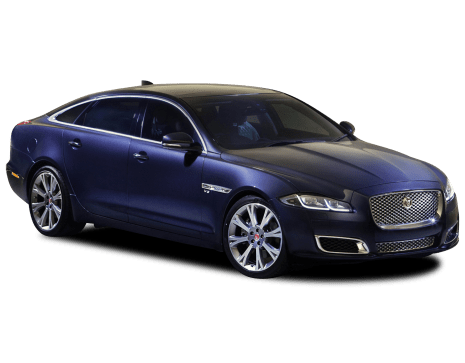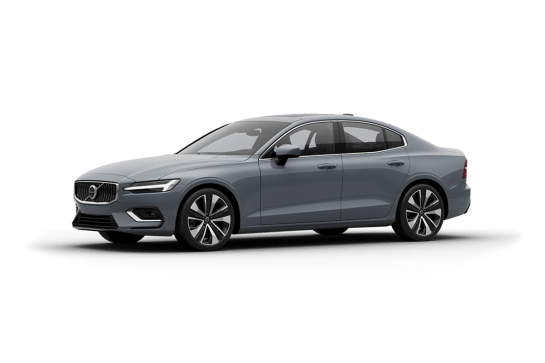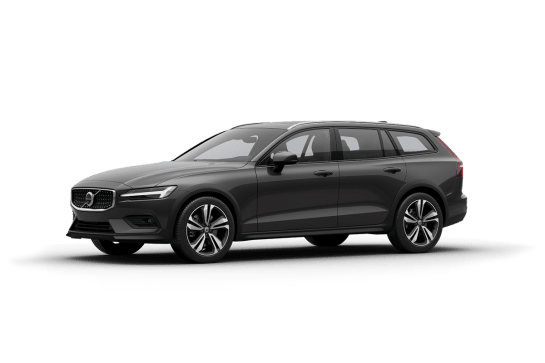
BMW 5 Series VS Audi A8
BMW 5 Series
Likes
- Dynamic ability belies its weight
- Plush and ergonomic interior
- Three variants all have strengths
Dislikes
- 520i is pricey for 153kW four-pot
- Styling a little gaudy in places
- Multimedia could be simpler
Audi A8
Likes
- Unmistakably Audi
- Amazing interior design
- Groundbreaking safety features
Dislikes
- Pricey options
- Most of its autonomous tech locked out for Aus
Summary
BMW 5 Series
More than half a century of 5 Series pedigree has led BMW to this, the first electric version of its venerable sedan, the i5.
It's true that electric cars come with benefits that suit the realm of luxury (or at least executive) motoring like their effortless acceleration and near-silent operation, so this new G60 5 Series has the potential to be the best yet in its ‘i5’ form.
But there are rivals, well-liked ones at that, which BMW must contend with to snatch the spot at the top of the large premium sedan ladder technically held currently by the Porsche Taycan in terms of sales - though Mercedes’ E-Class would lead if its electric cousin EQE’s sales were combined.
Read more about
So, with names like that to go up against, BMW better have brought its A-game.
| Safety rating | — |
|---|---|
| Engine Type | — |
| Fuel Type | Hybrid |
| Fuel Efficiency | —L/100km |
| Seating | — |
Audi A8
In a world where genuine wood trim and nappa leather comes in a Mazda6 for under $50,000, premium brands like Audi have been forced to come up with new hallmarks to underpin their status and asking prices.
This is particularly true at the top end of town, with the latest S-Class and 7 Series featuring tech advances that aren't even legally usable at this point.
The new, fourth-generation Audi A8 is no different, packing hardware capable of autonomous driving well ahead of what is currently allowed on any public roads, along with an array of safety, efficiency and convenience firsts for the brand that cement the model's position at the top of the four-ringed luxury tree.
The current S-Class may measure your vital signs and aim to improve your general well-being, but it won't give you a foot massage. If you tick the right options boxes, the new A8 will.
We were among the first to drive the new A8 at its Australian launch around Sydney last week.
| Safety rating | |
|---|---|
| Engine Type | 3.0L turbo |
| Fuel Type | Diesel |
| Fuel Efficiency | 5.8L/100km |
| Seating | 5 seats |
Verdict
BMW 5 Series8/10
There’s no getting around the i5 being a rather expensive offering. More than $150,000 to get into an electric sedan that’s not much faster than a hot hatch is a big ask, but there’s plenty to enjoy about the 5 Series.
Things like its heated leather seats shouldn’t be the reason you’re willing to spend so much on a sedan when a $50,000 hybrid SUV will score you the same, instead it’s the fact the 5 Series is a delight to drive and hasn’t lost the feeling of prestige the badge has earned over the last half a century.
In terms of value - if speed isn’t your focus and you’re less of a gadget-type-operator when looking at cars like this - the 520i has the style and comfort you’d need and at $100K less than the M60.
And in terms of large electric sedans, the i5 eDrive40 is cheaper than a Porsche Taycan (by a little) or an Audi e-Tron (by a lot). The Genesis G80 Electrified is the closest cheaper rival, by about $10K, or the less powerful Mercedes EQE is similarly priced at $154,900.
Essentially, if you’re looking at a 5 Series, it might be worth considering if you really need it to be electric, but if so, there aren’t many alternatives in its category for the price.
Note: CarsGuide attended this event as a guest of the manufacturer, with meals provided.
Audi A87.9/10
The new A8 is a very accomplished machine, and can certainly be optioned up with enough toys to entertain and comfort whether you're riding in the front or back.
It's not possible to say if its better than the S-Class or 7 Series in isolation, but it has a unique design ambience that's unmistakably Audi. If you're a four-ring devotee, you won't be missing out.
Based on this test, the sweet spot of the range is the long-wheelbase 55 TFSI. At this end of the market, it's fair to say the extra $12,000 for the added length and $3000 for the smoothest and most powerful engine are worth it.
Regardless of the bigger wheels, we'd probably spring for the Premium plus package and the Executive package's rear seat with the Entertainment package for all the most impressive toys. This would mean a total list of almost $250k, but it's arguably how Audi intended the new model to be.
Also check out Peter Anderson's video review from the A8's international launch:
Would you consider the new A8 over an S-Class or 7 Series? Tell us what you think in the comments section below.
Design
BMW 5 Series
If you’ve watched other members of the BMW family go into a new generation within the last few years - the 3, 4 and 7 Series particularly, you won’t be too surprised by what you see here. Especially with the latter, having seen the petrol variants look roughly the same as the electric ones.
BMW specifically made the petrol 520i and the i5 variants look similar for egalitarian purposes - to not disenfranchise 520i buyers who are still spending a fair chunk of cash but might not be ready to go EV.
That means all three variants score a mix of new and old. The kidney grille remains and isn’t as large as on the M3 or 4 Series, while the bonnet line following it and the ‘character line’ down the car’s side also remain. And yes, the Hoffmeister kink where the C-pillar meets the passenger window’s lower corner is still there.
On that C-pillar though is a ‘5’ stamped into the bodywork, new to this generation, while the front grille as mentioned has a glowing light surround - the brand’s ‘Iconic Glow’ already seen on the 7 Series.
Overall, thanks to being slightly larger in every dimension, the new 5 is starting to look bigger than a 7 Series from a little while ago. And that’s because it is - its body is overall longer than an E65 7 Series from the mid-2000s.
It’s 5060mm long 1900mm wide, 1515mm tall (97mm longer, 32mm wider, and 36mm taller). Its wheelbase is 20mm longer too at 2995mm.
Audi A88/10
At first glance the new A8's exterior styling may look a tad obvious, with unmistakably Audi design adding a bunch of straight lines to make things look more serious.
The reality is far more considered, being the first whole design to emerge under Audi Design boss Marc Lichte's stewardship. Previewed by the first Prologue concept in 2014, the result has an elegance that underlines its position as Audi's flagship and is less likely to be confused with an A6 than the S-Class can be with the E-Class.
If you're after the ultimate in design details and lighting performance, you can also opt for $13,200 laser headlights that can double the range of LED headlights to 600m ahead. This option also brings OLED tail-lights with jewel-like filaments less than 1.0mm thick.
Compared with the third-generation model it replaces, the size of the new A8 is 37mm longer, 13mm taller but 4.0mm narrower, riding on a 6.0mm longer (2998mm) wheelbase. The long wheelbase version is 130mm longer again in wheelbase and overall.
It rides on the latest MLBevo architecture shared with the A4, A5, A6, A7, Q5 and Q7, along with the Bentley Bentayga, new Porsche Cayenne and VW Touareg, and the upcoming Q8.
In A8 guise, it combines aluminium, steel, magnesium and CFRP to result in the biggest material variety used in an Audi to date. Kerb weight ranges from 1995kg for the short-wheelbase petrol model to 2020kg for the long-wheelbase version, with the diesel versions adding 55kg respectively.
A 15-spoke, 19-inch wheel design is standard for Australia, but the Premium plus package fitted to all the cars we tested brings a 10-spoke 20-inch design, while the options list includes another three choices of 20-inch wheels. You can also get 21-inch alloys with the optional Sport package.
As you'll see in the interior images, the A8 represents another significant step forward for Audi design, with horizontal themes and numerous traditional controls now hidden beneath touchpads.
Key among these is the deletion of the centre console controller for the multimedia system, which has been replaced by an 8.6-inch secondary touchscreen beneath the 10.1-inch main screen. Apple CarPlay and Android Auto smartphone interfaces are available via USB connection, and the A8 will act as a mobile Wi-Fi hotspot if you sign up for a data plan.
This split layout is less imposing than using one giant screen as in a Tesla, and both give haptic and acoustic feedback to commands to simplify use while driving. All versions also score the excellent 12.3-inch 'Virtual Cockpit' display ahead of the driver.
All A8s also now get a smartphone-like back seat remote controller, which enables control of temperature settings, seat adjustment, lighting, media functions and window blinds (when optioned) via its 5.7-inch OLED touchscreen.
Another surprise detail is that the interior door handles are now power assisted, which represents the lengths Audi has gone to in reducing control weights.
Practicality
BMW 5 Series
A longer wheelbase means more space inside, where the 5 Series also still looks fairly familiar to those who have spent any significant time in a recent model BMW.
BMW has historically been pretty bang-on with ergonomics, and the new-gen 5 does a good job of sticking to that. Comfortable sports seats and quality feel for the materials on touch points mean the 5 Series feels nice to be in, and relatively restrained interior design for a somewhat luxurious car means it looks nice too.
It’s let down only by a couple of things - its multimedia screen and Operating System 8.5 is a little less simple to use now, and requires more touching the screen than previous iDrive systems, rendering the scroll wheel less useful.
The BMW Interaction Bar too is a little tricky to see controls on, as well as lacking physical feedback for using controls. Vent flow controls are digital sliders on the Bar, while vent direction is controlled by an unusual ‘joystick’ style control nearby.
The rear seat is plenty spacious, as you’d expect from a large sedan, with climate controls and ports for charging devices in the rear.
Audi A88/10
Choosing the biggest sedan in the line-up isn't just about outdoing your neighbours, it's also fair to expect enough room to stretch out and ponder your stock options.
Despite the new A8's minor 6.0mm wheelbase growth, the interior dimensions have grown 32mm in length, which has expanded legroom as well as headroom.
Fundamental practicality elements are covered as well, with a cupholder and bottle holder for each outboard passenger, an array of USB and 12-volt charge points and two ISOFIX child seat mounts for the back seat. There's also a Qi wireless phone charger within the centre console.
Boot space is a useful 505 litres, and while there's no split-fold for the back seat, there is the capacity to bring curtain rods home from Bunnings via the ski port. There is also a space saver spare wheel beneath the boot floor.
Price and features
BMW 5 Series
There are three members of the new 5 Series family from launch, with a base 520i starting things off from $114,900 before on-road costs.
It’s the only petrol-powered (with mild-hybrid, we’ll come back to this) variant in the trio, but it does have a fairly extensive list of features as standard. In terms of tech and comfort, most of what comes with the 520i is available further up the range too, with the major differences being drivetrain related.
In the 520i, the interior upholstery is synthetic ‘Veganza’ leather with Alcantara, though optional Merino leather is a $4000 BMW Individual option. The front seats are heated as standard, however, and electrically adjustable with memory settings and lumbar support.
A 12.3-inch instrument display paired with a 14.9-inch multimedia display are standard across the range, running BMW’s Operating System 8.5, while a head-up display, ambient lighting, wireless phone charging tray and BMW’s ‘new’ Interaction Bar are included too - a crystalline-style strip across the dash with touch-sensitive ‘buttons’ like the climate controls.
A panoramic glass roof - unable to be opened - is standard too, while the 520i’s sound system is a Harman Kardon set-up with 12 speakers.
Exterior features are quite similar to the more expensive i5 variants, with Adaptive LED headlights, automatic boot opening, an M design kit with front and rear aprons, side sills, and BMW’s Iconic Glow kidney grille surround.
Optional in the 520i is an ‘Enhancement Package’ which adds a choice of aerodynamic 21- or 20-inch wheels, metallic paint, and a 655-watt 17-speaker Bowers & Wilkins surround sound system for $5400. One test car on the launch we attended was painted in a BMW Individual colour - Tanzanite Blue - which upped the price to $7800.
Moving up the range to the mid-tier i5 eDrive40, which starts from $155,900, adds Merino leather interior, metallic paint, Bowers & Wilkins surround sound and aerodynamic 20-inch wheels standard, but it also includes adaptive suspension and some other EV-related features.
BMW’s ‘Adaptive Suspension Professional’ comes with Integral Active Steering (rear-wheel steering) and is a step up over the M Sport suspension from the 520i, while its aero wheels function as a way to keep the electric car’s range being affected by resistance.
The eDrive40 also comes with an acoustic protection system to make ‘electric car noises’ to warn pedestrians, as well as BMW’s ‘Iconic Sounds’ for the occupants - basically a system that uses orchestral sounds composed by Hans Zimmer that are affected by acceleration intensity, speed, and drive mode.
It also comes with the standard kit for an electric car, a Mode 2 and Mode 3 charger, cable, and a five-year Chargefox subscription.
The top-spec i5 M60 xDrive ups the cost to $215,900 and the features list again slightly (as well as being far more powerful).
Its suspension is even more advanced, adding the brand’s Adaptive M Suspension Professional with active anti-roll, plus 21-inch aero wheels as a no-cost option. The M60 also gains an M rear boot lip spoiler.
Inside, BMW’s ‘Crafted Clarity Glass’ controls in the centre console are standard, as is ventilation for the front seats and a four-zone automatic air conditioning system.
Audi A87/10
The fact that the new A8's entry price has dropped almost $6000 to $192,000 is likely to have less impact than a $19,990 Hyundai i30 special, but Audi's claim that it offers up to $36,000 more value than before may lower a few bifocals.
Introducing Audi's new naming scheme, which no longer makes reference to engine capacity in preparation for electrification, the diesel base model wears a 50 TDI badge, before moving $3000 north to the petrol 55 TSFI. Either models can be had in long-wheelbase form (signified by a capital L after A8) which will cost you an additional $15,000 respectively.
The $210,000 A8 L 55 TFSI at the top of the price list is more than $42,000 cheaper than the previous V8 diesel 4.2 TDI and a more than $120,000 less than the previous S8 Plus, but a new performance flagship is due to appear in the near future.
Value is rather subjective at this end of the price scale, but by comparison the entry RRP for the new A8 undercuts the base 7 Series by $34,900, the S-Class by $3900, but starts $1871 above the Lexus LS.
Both the A8's 50 and 55 engines come with the same trim levels, but when the standard kit is this lengthy it's more a matter of features not included in the A8, rather than those that are.
As you might expect, there's an array of options available. These accessories range from the aforementioned wheel choices and laser lighting to $3600 Alcantara headlining, $4500 all-wheel steering, a $5200 night vision system, or $12,100 3D Bang & Olufsen sound system with 23 speakers.
There are five options packages also, starting with the $6690 'Entertainment package' which brings a six-disc DVD/CD changer (on top of the standard DVD/CD player) and twin tablets for the rear seats which mount to the front seat headrests.
The nappa leather trim can be expanded to the upper and lower dash and glovebox, door trims, headrests, centre console, steering wheel airbag cover and the backs of the front seats with the 'Full leather package' for an extra $9950.
If you can't hold out for the sport edition S8, you can almost look the part with the $9950 'Sport package', which brings a more aggressive front and rear bumper, 21-inch wheels, all-wheel steering and expanded 'piano black' interior trim.
Audi Australia tells us all A8s ordered to date (along with both cars pictured here) have ticked the $11,000 'Premium plus package', which brings 20-inch rims, adaptive windscreen wipers with integrated jets, chrome exterior details, ambient lighting with variable colours, black control buttons, digital TV, electric rear sunblinds, the full leather package mentioned above, interior fragrancing with ionisation technology, rear tinted windows, softer rear headrests and ventilated massage front seats.
If you've already selected the rear seat entertainment system, you can also choose the $18,500 'Executive package' which brings individual reclining back seats and extended centre console - which also eliminates the centre rear seat - with folding tables, front and rear seat ventilation and massage function, heated armrests all round and a heated steering wheel. It's the Executive package that also brings the heated rear passenger-side footrest and the foot massage USP.
Under the bonnet
BMW 5 Series
Despite BMW calling it ‘electrified’, the base 520i is only a mild hybrid so most wouldn’t realise unless they were told.
Its turbocharged 2.0-litre four cylinder puts out a modest 153kW and 330Nm, with power and torque sent to the rear wheels via an eight-speed automatic transmission.
BMW claims it’ll knock over the 0-100km/h sprint in 7.5 seconds, a few seconds too slow to blow anyone’s socks off.
The mid-spec eDrive40 has a little more kick to it, its rear-mounted electric motor capable of 250kW/430Nm and able to cut that time to 6.0 seconds.
It’s fitted with an 84kWh battery to draw its power from, the same as the 442kW/820Nm M60 with its all-wheel drive dual-motor setup.
The M-tuned i5 can hit 100km/h in a claimed 3.8 seconds. Bye bye socks, perhaps.
Audi A89/10
You might be surprised to learn there's no V8 in the new A8's arsenal - for now, the S8 could change that - but an even greater sign of the times is the return of a petrol version for the first time since 2013. Efficiency gains are the main reason for the petrol comeback, which is explained in detail under the fuel consumption heading below.
Both the 210kW/600Nm 50 TDI turbo-diesel and 250kW/500Nm 55 TFSI petrol specifications use 3.0-litre turbocharged V6s which may seem to be simply plucked from existing models, but they bring mild hybrid technology to the Audi line-up for the first time.
Unlike conventional hybrids that use an electric motor to provide horsepower to drive the vehicle, a mild hybrid (or MHEV) enables the combustion engine to be switched off when the vehicle is coasting or braking, or effectively as an extension of a start/stop system which conserves fuel when a car is stationary.
The A8's mild hybrid system is facilitated by the move to a 48 volt electrical system, with a supplementary 10Ah lithium-ion battery mounted in the boot to keep the electrical systems fed for up to 40 seconds with the engine switched off. Audi claims the system has the capacity to save up to 0.7L/100km.
An extra starter motor has been integrated with the alternator to restart the engine more smoothly via a belt, rather than the conventional cog and ring gear used by the dedicated starter motor for cold starts.
Both engine specs deliver their max torque rating from just above idle, with the 50 TDI at 1250rpm and the 55 TSFI at 1370. Claimed 0-100km/h acceleration performance figures are an impressive 5.9s and 5.6s respectively.
Like all recent longitudinal-engined Audis, the new A8 uses a version of ZF's much lauded eight-speed torque converter auto gearbox, and both engines send power to all four wheels via the 'quattro' all-wheel drive system.
The optional all-wheel steer system can twist the rear wheels by as much as five degrees, reducing the turning circle by around 1.0m at slow speeds. While at higher speeds, the rear wheels move parallel with the fronts by as much as two degrees to improve stability, particularly for rapid lane changes and evasive manoeuvres.
All new A8 variants carry a maximum braked towing capacity of 2300kg.
Efficiency
BMW 5 Series
BMW claims the petrol 520i sips 6.7 litres per 100km from its 60-litre fuel tank, though we were unable to independently test any of the claimed figures on the launch day.
The base car has a theoretical range of 896km if it was possible to achieve the claimed fuel consumption figure for the duration of the whole tank - but it isn’t and realistically you could knock about 20-30 per cent off that, depending on how enthusiastically you drive.
In the i5 variants, the same 84kWh battery provides slightly different ranges due to the eDrive40 using 16.56kWh per 100km, and the M60 using 18kWh.
The eDrive40 has a claimed 550km maximum range, while the M60 has a 506km figure thanks to its extra motor and weight.
Audi A88/10
Gone are the days where full-size luxury sedans got away with devil-may-care fuel consumption, and even though they still spin six cylinders and need to move around two tonnes, the 55 TFSI petrol versions manage an 8.2L/100km official combined figure. This is when using at least 95 RON Premium unleaded of course.
As you'd expect, the diesel fuel economy is even better with 5.9-6.0 official figures across wheelbases.
With a fuel tank capacity of 72 litres, this suggests a theoretical range between fills of 878km for the petrol models, and between 1200-1220km for the diesels. The A8's spec sheet lists the option of an 82-litre tank if they aren't quite far enough for you.
Driving
BMW 5 Series
For some cars, the list of features is what really separates the variants, but that’s not the case for the 5 Series. As is a bit of a BMW tradition, the drivetrains dictate the different trim levels and prices, and there are three fairly distinct flavours of 5 Series.
Starting at ground level, the 520i might at first seem like a bit of boring vanilla. Except it’s actually quite smooth and light vanilla.
There’s not a lot to write about when it comes to its drivetrain, but the lightness of its engine and petrol tank combo when compared to EV batteries and motors is refreshing, and makes for a quite dynamic rear-drive sedan.
Its 153kW and 330Nm is delivered smoothly enough with the mild hybrid assistance doing a little in helping responsiveness, but without intervening in the gearshifts it doesn’t feel particularly keen.
It lacks the ride comfort of the i5’s adaptive suspension, but it’s able to be driven in a spirited manner that belies its size and even, to some extent its 1725kg kerb weight. Chocolate sprinkles on the vanilla, if you like.
It’s not fast, but it feels nimble compared to its electric siblings and can carry a fair bit more speed through corners, after which there’s room to notice its rear-drive characteristics.
It’s especially noticeable after getting out of the 2130kg eDrive40, though the extra power from its 250kW/430Nm motor makes for some more spirited acceleration and a little more excitement when exiting a corner, especially if you’re aiming to double-check if it really is rear-wheel drive. There’s a little more than choc-topped vanilla going on here.
The steering is, like in the 520i, direct and responsive, though in most cases is probably best set to ‘comfort’ rather than ‘sport’ in its settings.
The eDrive40 is rather comfortable and capable when barrelling through twisty backroads, and doesn’t feel out of hand for a five-metre-long sedan. It holds its weight well, and telegraphs when you might be approaching the limit quite sensibly.
When considering that, then, it’s impressive how brutally capable the 2305kg M60 is.
Here, we’re looking at a double-choc fudge with extra choc, and maybe some cookie dough in there for good measure. There’s a lot to like, but boy is it heavy.
It’s 580kg (or exactly half a Peugeot 208 GTi) heavier than the 520i, but it feels quick on its feet and its anti-roll seems to do a lot in terms of dynamics, the limiting factor really seems to be its tyres (which can and will squeal quite quickly to let you know when approaching said limit).
While you’ll need to take caution with how much speed you approach a corner with, you’re not going to lack acceleration on the other side, its all-wheel drive being less ‘fun’ but more efficient at getting you away from the bend than in the rear-drive eDrive40.
That adaptive suspension does also translate to a comfortable ride on relatively rough roads - only particularly bad bumps will reveal how much weight and pressure is being placed on each corner of the big sedan.
Audi A88/10
Our test started in the worst of Sydney morning traffic, which presented the chance to put the latest adaptive cruise assist (ACA) system through its paces on a very clogged Eastern Distributor.
I'm a huge fan of active cruise control systems that guide the vehicle from speed to a stop, but the A8's ability to start moving again is another step beyond. It helps you avoid being ‘that guy' who hasn't noticed the traffic moving, and would no doubt work wonders for traffic flow if all cars were so equipped. Given the chance, Audi says this system works all the way from 0-250km/h.
No matter what your reaction to the A8's exterior, the freshness of the interior design is like no other, and everything you touch feels first class.
The four-spoke steering wheel has a surprisingly large diameter and is shared with the upcoming A6, but uses thinner spokes than the norm to promote visibility of the virtual cockpit display as the wheel is twirled.
The haptic and acoustic screens make it as easy as we've experienced to handle a touchscreen while driving, but not quite as simple as the previous console controller.
Front and rear seats are softly padded for comfort rather than support, and unsurprisingly there's ample room in every direction for this 172cm tester, regardless of wheelbase.
All examples of the A8 we drove were optioned with the Premium plus package, which means one inch larger 20-inch alloys. Despite all A8s coming standard with adaptive air suspension, small bumps like cats eyes and expansion joints are more noticeable than you might expect. As is often the case, the standard 19-inch alloy wheels are likely to be the solution.
We drove both engines and wheelbase choices at the A8 launch event, and you need to be paying close attention to hear any extra noise from the diesel. It does make a muted groan under throttle, but likely worth the 300-plus kilometres of extra range if that's what you're after.
The diesel's smoothness is also no doubt aided by its use of active engine mounts. If you're after outright refinement and performance, the petrol is the one for you but neither feel in any way sluggish.
Heading through the bends of the Royal National Park and then back over the hills via Macquarie Pass at pace, there was no disguising the fact that the A8 is a big car, and it tends to float unless you select 'Dynamic' from the drive mode selector. Regardless of mode, it's more planted than any luxury SUV.
Making a bee-line back to Sydney via the Hume, the A8 simply wafted along at 110km/h in near silence. As you'd expect.
Safety
BMW 5 Series
ANCAP hasn’t crash tested the new 5 Series. The last generation was a five-star car and it would be unusual to see that change with additional safety features - even with stricter testing.
The 5 Series comes with BMW Driving Assistant Professional as standard, with active cruise, lane assist and departure warning, front and rear cross traffic alert, collision prevention and intervention systems - in fact BMW says it has about 40 safety systems including an augmented reality dash display.
Its list of airbags includes front and side airbags for driver and passenger including one between the two occupants, as well as curtain airbags front and rear.
Audi A88/10
The new A8 is yet to score a rating from ANCAP or Euro NCAP, but comes with a brand-leading array of safety features.
All versions come with all the airbags, alerts, self parking, lane assist, self driving, front and rear AEB, 360 degree and reversing cameras, parking sensors and traction aids you'd expect.
The airbag count has been further bolstered by an industry-first centre airbag, which has been designed to prevent head clashes between front seat occupants. This also represents Audi thinking beyond any Euro NCAP or ANCAP criteria.
It also comes with Audi's exit warning system, which warns the driver of passing cars or cyclists but can now delay the door opening in case the driver doesn't see the warning light.
A front-mounted laser scanner replaces the usual radar system for active cruise control and front AEB, which doubles the range of a radar scanner to 80m and enables both functions to work at speeds up to 250km/h.
This laser scanner is also key to the A8's Level 3 autonomous preparation, but local laws limit its capability to active cruise control with lane assist.
Ownership
BMW 5 Series
BMW has a fairly industry-standard five-year/unlimited kilometre warranty on its new cars, while its electric car batteries are covered by an eight year/160,000km warranty.
For servicing, BMW offers numerous discounted packs and deals based on your preferences and desire to pay upfront.
For the 5 Series, a five-year/80,000km basic service package is $2400, though the i5 will have different needs and lower servicing costs not yet listed by the brand.
Audi A87/10
Like all Audis, the new A8 is covered by a three year, unlimited kilometre warranty. This is short of the five year-plus periods becoming more common among mainstream brands, but equal to the terms offered by BMW and Mercedes-Benz. Lexus differs by offering a four year, 100,000km plan.
Service intervals and capped price servicing mirror the previous A8, with a 12 month/15,000km schedule, and maintenance costs for the first three services can be wrapped into a package for $1900.
We had no issues during our test, but any common faults, common problems or reliability issues are likely to appear on our A8 problems page.




